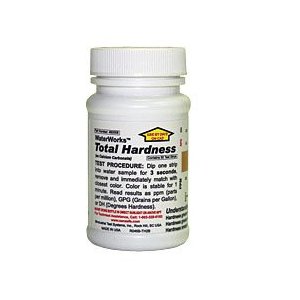While true that many water softeners do use a form of ‘salt’, if operating properly, they do not put nearly enough sodium, typically less than 12.5 mg per 8 ounce glass of water (source), into the water to impart a salty taste to it — especially since sodium and salt are not the same thing (see Is Sodium the Same as Salt?).
A glass of water containing that low an amount of sodium qualifies for the US Food & Drug Administration’s “very low sodium” category.
Why do water softeners contain salt and/or sodium?
The majority of water softeners utilize a resin bed, which you can see at their website, comprised of negatively charged plastic beads packed with positively charged sodium ions. As source water passes through the bed of beads, calcium and magnesium ions with stronger positive charges disrupt the sodium ions’ bonds with the beads and form their own bonds with the plastic beads.
Eventually after a water softener operates for a while the supply of sodium ions in the resin bed gets depleted and when that happens the resin bed must get recharged using a concentrated salt brine solution that more or less overpowers the collected calcium and magnesium and causes them to become dislodged from the plastic beads. Sodium molecules then take their place on the resin beads and the magnesium, calcium and excess sodium molecules get flushed out of the system.
After a properly completed flushing and rinsing, a water softener operating properly ought not produce water that has a salty taste since all of the actual salt (NaCl) should have gone out as waste water during back washing.
Measuring water hardness
Scientists typically measure water hardness using one of two scales: Grains per Gallon (GPG) and Parts per Million (ppm). One grain per gallon of hardness equals approximately 17.1 ppm of hardness.
You may also see ppm expressed as milligrams per liter (mg/L) in some literature.
|
|
Rating categories for water hardness
As a general rule,
- Water that contains less than 1 GPG or 17.1 ppm hardness gets labeled as ‘soft’.
- Water that contains between 1 and 3.5 GPG, or 17.1 to 60 ppm, hardness gets labeled as ‘slightly hard’.
- Water that contains between 3.5 and 7 GPG, or 60 to 120 ppm, hardness gets labeled as ‘moderately hard’.
- Water that contains between 7 and 10.5 GPG, or 120 to 180 ppm, hardness gets labeled as ‘hard’.
- Water that contains between greater than 10.5 GPG, or 180 ppm, hardness gets labeled as ‘very hard’.






